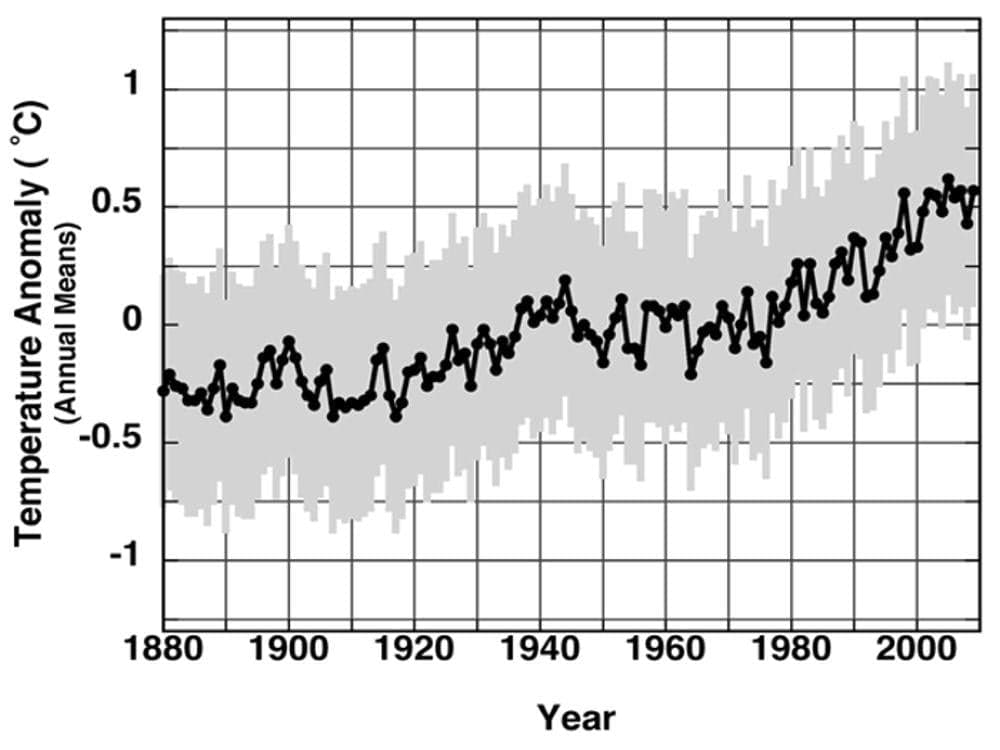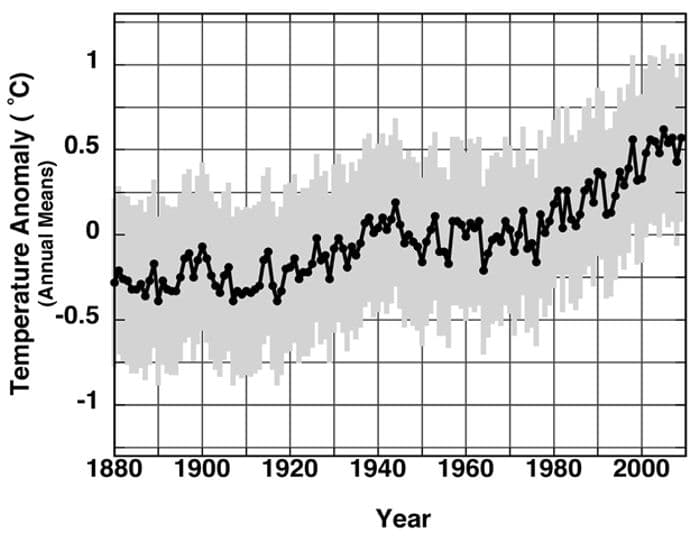Thousands of near-surface temperature data points are collected globally each day. These data points are freely available to each of the global near-surface temperature anomaly producers: NOAA, NASA GISS, Hadley Center/UEA and the Japanese Meteorological Agency. Each of these anomaly producers selects from among the data, “adjusts” the data, homogenizes the data and, in the case of NASA GISS, “Infills” missing data. Each agency produces a monthly global temperature anomaly calculation based on this data.
The global temperature anomaly calculations differ among the agencies because of difference in the reference period, the data selected for inclusion, the “adjustment” process and possible “infilling” of missing data. The anomalies are reported to two decimal place “precision”, typically with an uncertainty band of +/- 0.10ºC. However, according to a study by Dr. Patrick Frank of the Stanford Synchrotron Radiation Lightsource/SLAC at Stanford University, the reported uncertainty bands “have not properly addressed measurement noise and have never addressed the uncontrolled environmental variables that impact sensor field resolution”.
The uncontrolled environmental variables which affect sensors in field locations in the United States were surveyed and reported upon by the Surface Stations Project. Dr. Frank’s analysis focuses on the effects of measurement noise. Dr. Franks concludes that, for the common MMTS sensor, the total noise plus resolution lower-limit 1σ measurement uncertainty in an annual temperature anomaly referenced to a 30-year mean is ±0.46ºC, for a well sited and maintained installation. He further estimates that issues with actual field installations in the Global Historical Climatology Network, “a globally complete assessment of current air temperature sensor field resolution seems likely to reveal a measurement uncertainty exceeding ±0.46ºC by at least a factor of 2.”
The significance of these uncertainties is illustrated in the following graph, in which the black line is the NASA GISS reported historical temperature anomaly, as reported in 2010; and, the gray area represents the measurement uncertainty of +/-0.46ºC about the reported historical temperature anomaly. “The trend in averaged global surface air temperature from 1880 through 2000 is statistically indistinguishable from zero (0)º Celsius at the 1σ level when this lower limit uncertainty is included, and likewise indistinguishable at the 2σ level through 2009.”
Assuming Dr. Franks is correct that actual field measurement uncertainty is =/> 2 x 0.46ºC, the gray area would be twice as wide as shown in the graph at the1σ level, rendering the trend in averaged global near-surface air temperature indistinguishable from zero (0)º Celsius through 2017.

Dr. Franks concludes as follows:
“Future noise uncertainty in monthly means would greatly diminish if the siting of surface stations is improved and the sensor noise variances become known, monitored, and empirically verified as stationary. The persistent uncertainty due to the effect of uncontrolled microclimatic variables on temperature sensor resolution has, until now, never been included in published assessments of global average surface air temperature. Average measurement noise and the lower limit of systematic sensor errors combined to yield a representative lower limit uncertainty of ±0.46ºC in a 30-year mean annual temperature anomaly. In view of the problematic siting record of USHCN sensors, a globally complete assessment of current air temperature sensor field resolution seems likely to reveal a measurement uncertainty exceeding ±0.46ºC by at least a factor of 2. The ±0.46ºC lower limit of uncertainty shows that between 1880 and 2000, the trend in averaged global surface air temperature anomalies is statistically indistinguishable from 0ºC at the 1σ level. One cannot, therefore, avoid the conclusion that it is presently impossible to quantify the warming trend in global climate since 1880.
Finally, the relatively large uncertainty attending the global surface instrumental record means that the centennial temperature trend is not a precision target for validation tests of climate models. Likewise, the current surface instrumental record cannot credibly be used to train or renormalize any physically valid proxy reconstruction of paleo-temperature with sufficient precision to resolve any temperature difference less than at least 1ºC, to 95% confidence. It is thus impossible to know whether the rate of warming during the 20th century was climatologically unprecedented, or to know the differential magnitude of any air temperature warmer or cooler than the present, within ±1ºC, for any year prior to the satellite era. Therefore previous suggestions, that the rate or magnitude of present climate warming is recently or millennially unprecedented, must be vacated.”
These conclusions paint a very different picture of the state of our understanding of global temperature change than the anomaly changes reported to two decimal place “precision” by the producers of the global near-surface temperature anomaly products. They strongly support the arguments for development of a global land surface climate fiducial reference measurements network.

